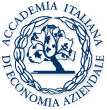Ambidextrous identity in Public Management. The case of Apulia Region
This research investigates how, in the age of post-bureaucracy, an ambidextrous identity could help public bodies to be efficient and to innovate at the same time. Public governance has undergone a paradigm change with the introduction of a post-bureaucratic system, that is flat, connected and flexible, with individual autonomy as the key to addressing environmental complexity. This new system should balance the trade-off between creativity, innovation and flexibility needed to solve emerging social challenges and efficiency as a basis for sustainable competitiveness.
In this scenario, this paper intends to present the static (forms) and dynamic elements (flows) of an organizational ambidextrous model that must be adopted by public administrations and agencies. The model is designed to optimize four interconnected dimensions: organizational, individual, inter-organizational and decisional and has been applied as a pilot test for the Apulia Region. The document contributes under a double perspective: on a theoretical level, expanding the discussion on the implementation and integration of organic and mechanistic models as privileged organizational archetypes in dynamic and collaborative scenarios; at the level of professionals, through the preliminary adoption of a complete technology organizational system for public organizations.




